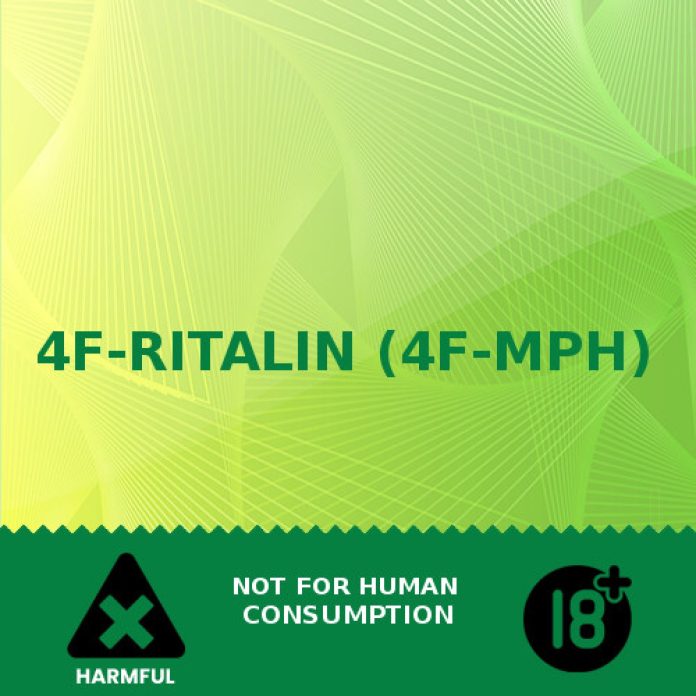Welcome to our comprehensive review of 4F-RITALIN (4F-MPH), a potent psychostimulant with a growing reputation in the nootropics (cognitive enhancers) and research chemical communities. This in-depth article will explore the history, dosage, administration methods, user experiences, and potential side effects of this drug.
General Information on 4F-Ritalin (4F-MPH)
4F-Ritalin, also known as 4F-MPH, is a novel research chemical. As you may see notice from the name, it’s a close analog of the popular prescription stimulant, Ritalin (methylphenidate). It belongs to the phenidate class of chemicals, known for their cognitive-enhancing and stimulant properties. 4F-MPH is thought to increase the levels of dopamine and norepinephrine in the brain, leading to improved focus, increased energy, and enhanced mental alertness.
Although 4F-Ritalin is not yet approved for medical use, it’s become popular in the nootropics community due to its prospect as a cognitive enhancer. Some users report that it provides a smoother, longer-lasting experience than traditional stimulants like Ritalin or Adderall. However, as you continue reading this research chemical review, it’s important to remember that this drug’s long-term safety and efficacy remain largely unknown.
History of 4F-Ritalin (4F-MPH)
The development of 4F-Ritalin began when researchers started exploring analogs of well-known stimulants like methylphenidate, which may have been in the 2010s. When the 4F-MPH research chemical first appeared on the research chemical market, it quickly gained attention for its potency and stimulant effects.
At first, it was marketed as an alternative to banned stimulants for people seeking legal highs. However, many countries have since classified it as a controlled substance due to its structural similarity to Ritalin and concerns about potential misuse. Germany, the U.K., the U.S., Switzerland, and Turkey control this substance.
Despite its legal status, 4F-Ritalin continues to be studied for its potential therapeutic applications. Researchers are interested in its possible benefits for patients with attention deficit hyperactivity disorder (ADHD), narcolepsy, and other disorders that involve sleepiness or inattention. If any users are in search of legal drugs to assist with disorders like these, it’s best to work with a health professional before considering the 4F-MPH research chemical.
Dosage and Administration
Here’s a quick note before we get into this section of our 4F-MPH review. Determining the appropriate dosage and administration method for 4F-Ritalin can be challenging due to the lack of clinical data. The following guidelines are based on user reports and should be considered anecdotal, not definitive. Start with a low dose and gradually increase as needed to minimize the risk of adverse effects.
Oral Administration
The most common method of administration for the 4F-MPH research chemical is oral ingestion. Users typically report dosages ranging from 5 to 30 mg, with 10 to 15 mg being a common starting point for those without prior stimulant experience. Effects can last anywhere from 4 to 10 hours, depending on individual metabolism and sensitivity.
Nasal Insufflation
Some users choose to insufflate (snort) 4F-Ritalin for faster onset and potentially stronger effects. Recommended dosages for this method are generally lower, typically between 5 and 20 mg. The effects are reported to last for 3 to 6 hours, with a more rapid onset compared to oral administration.
Vaporization
Vaporization, or “vaping,” 4F-Ritalin is another method of administration, although it is less common and potentially riskier due to the lack of data on its safety. Dosages for vaporization are typically lower than oral or insufflation, ranging from 5 to 15 mg. The onset of effects is rapid, but the duration is shorter, usually around 2 to 4 hours.
Suppository
Using the 4F-MPH research chemical as a suppository is a rare method of administration, and there is limited information available on appropriate dosages or effects. It is crucial to exercise caution and start with a low dose if attempting this method.
Redosing
Redosing with 4F-Ritalin isn’t recommended due to the potential for increased side effects, tolerance, and addiction risk. Users should allow for a sufficient period between doses to minimize these risks.
User 4F-Ritalin (4F-MPH) Reviews
For new users, it’s advisable to start with a low dose and monitor your response to avoid potential risks. Note that increasing the dosage or changing the administration method can also raise the risk of side effects and should be approached with caution. Also, remember that user reviews are completely subjective, so they may not apply to everyone.
Onset of Effects
Users report the onset of effects from 4F-Ritalin can vary depending on the administration method. Oral ingestion typically results in effects within 30 to 60 minutes, while insufflation or vaporization can lead to a more rapid onset, usually within 5 to 20 minutes.
Euphoria
Many users report experiencing a sense of euphoria when taking the 4F-MPH research chemical. This sensation is often described as a general feeling of happiness, well-being, and contentment. The intensity of this effect can vary depending on the individual, the dosage taken, and the method of administration. Some users find that the euphoria is more pronounced at higher doses or when the substance is insufflated or vaporized, as opposed to oral ingestion.
Stimulation
This drug is known for its stimulating properties, manifesting as increased physical energy, heightened mental alertness, and a general sense of motivation. Users often report feeling more awake and active after taking the substance, with some comparing the stimulation to that of caffeine or other popular stimulants like Ritalin or Adderall. This stimulating effect can be particularly appealing for those seeking a boost in productivity or an increase in physical endurance. However, it is crucial to remember that overstimulation can lead to side effects such as anxiety, increased heart rate, and elevated blood pressure.
Higher Focus
One of the most commonly reported effects of 4F-Ritalin is increased focus and concentration. Users describe a heightened ability to pay attention to tasks, improved memory retention, and an overall enhanced cognitive function. This effect has made 4F-Ritalin popular among students, professionals, and others seeking to improve their performance in mentally demanding activities.
Anticlimax (“Comedown”)
The comedown from 4F-Ritalin is often described as mild to moderate, with users experiencing fatigue, irritability, and a general sense of mental “fogginess.” These effects can be more pronounced if the user has taken a higher dose or redosed during their experience.
Potential Side Effects of 4F-Ritalin (4F-MPH)
As with any research chemical, there are potential side effects associated with 4F-Ritalin use. The most common side effects include:
- Insomnia
- Anxiety
- Increased heart rate
- Elevated blood pressure
- Dry mouth
- Nausea
- Headaches
- Sweating
- Loss of appetite
- Irritability
- Restlessness
Remember, these side effects can vary greatly depending on the individual, dosage, and frequency of use. Starting with a low dose and closely monitoring your response can help minimize the risk of adverse effects.


